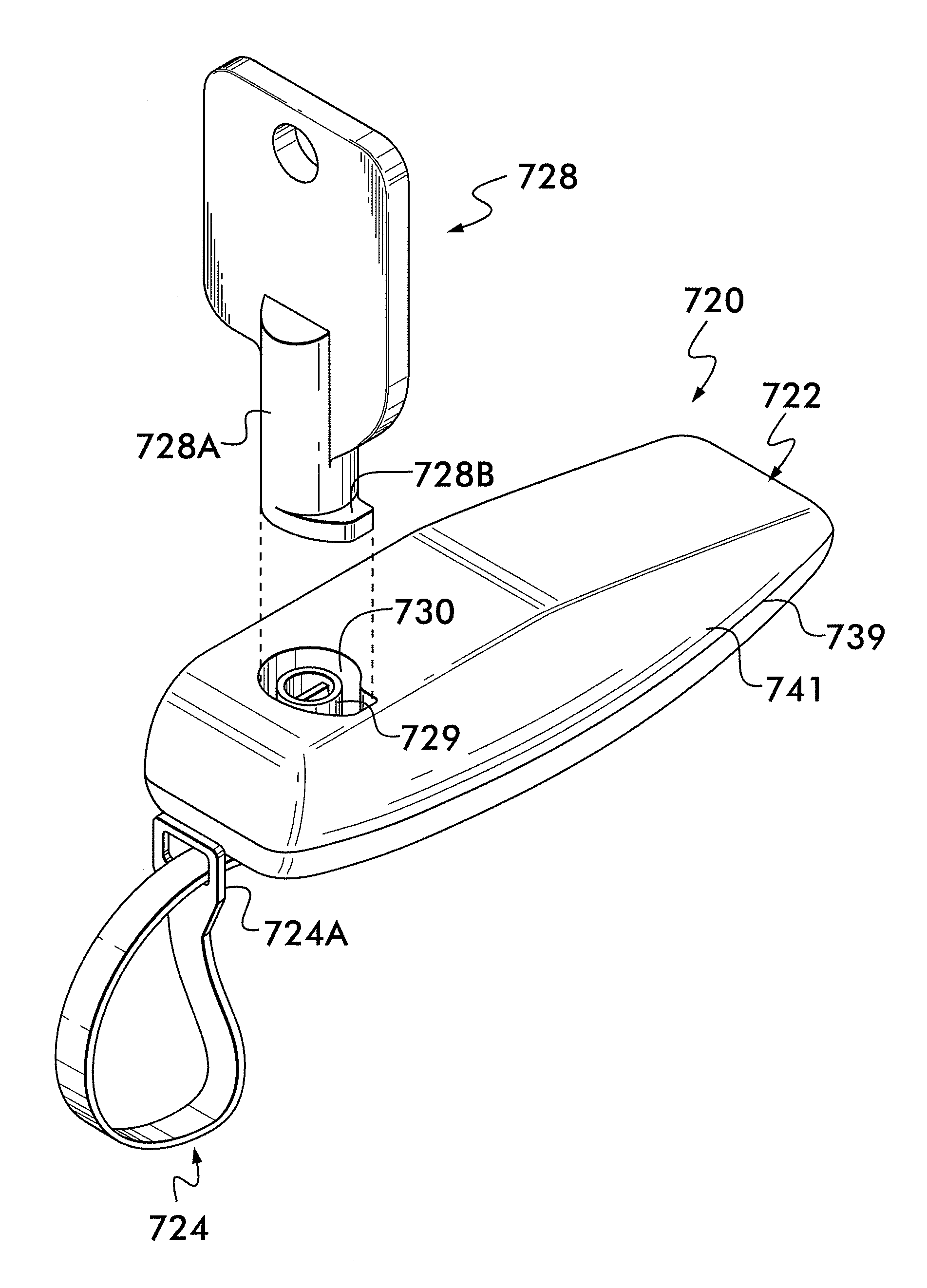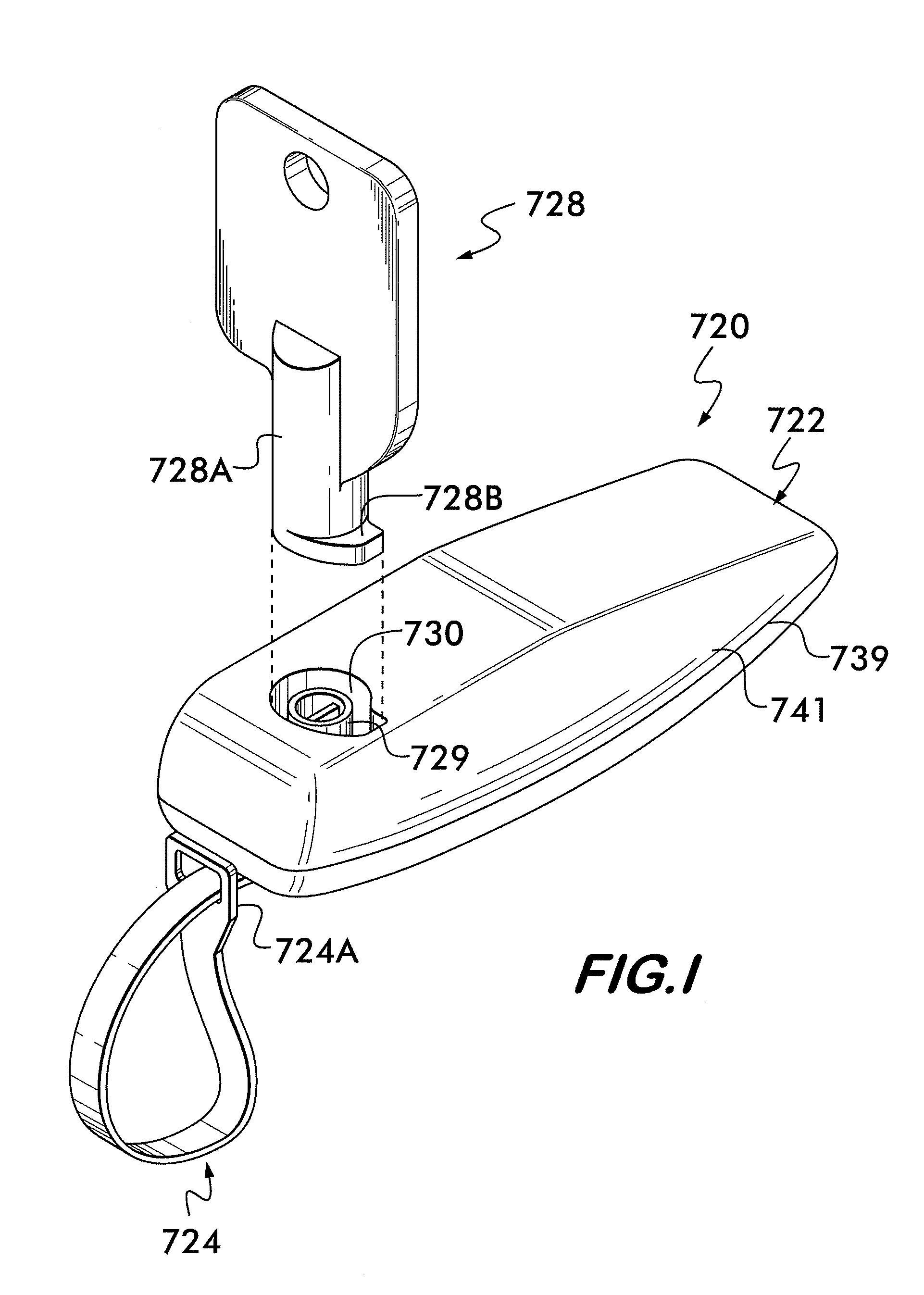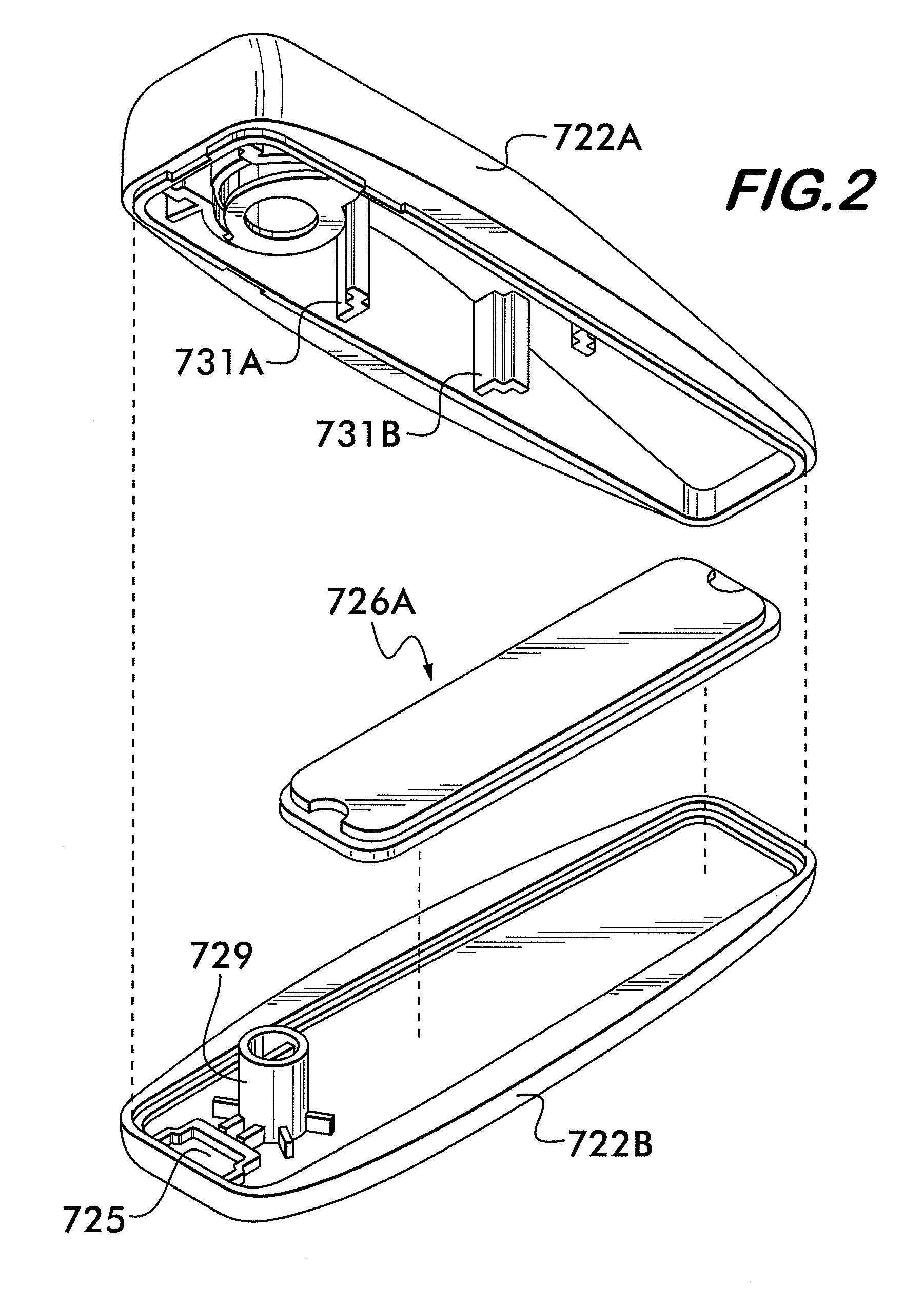Multi-attach reusable tag
a tag and multi-attach technology, applied in the field of multi-attach reusable tags, can solve the problems of not being visually deterring, not being secured, and not being able to meet the requirements of use, and achieve the effects of facilitating reducing manufacturing and inventory costs, facilitating use flexibility, and low cos
- Summary
- Abstract
- Description
- Claims
- Application Information
AI Technical Summary
Benefits of technology
Problems solved by technology
Method used
Image
Examples
second embodiment
[0061]A second embodiment 920 of the MARST is shown in FIGS. 10-19 which includes a pair of apertures 725A and 725B (FIGS. 12-14) for accommodating one or two ends of an attachment clip while showing its exemplary use with a belt, shown partially. Again, the security element that may be contained therein imposes no limitation on the invention and may include, by way of example only, an AM element 726A (FIGS. 13, 15-16 and 19) or a ferrite core element 726B (FIG. 14). The second embodiment housing 922 also comprises two portions 922A and 922B, as shown most clearly in FIG. 13, which are also fixedly secured (e.g., ultrasonically welded) together.
[0062]Use of the second embodiment 920 with a belt article requires the use of only aperture 725A because the attachment clip 1024 includes the sole fluke 724B (e.g., FIG. 12). In contrast, as will be discussed later, the second embodiment 920 may be used with a different attachment clip 1124 (FIGS. 18-19) wherein both ends of the attachment ...
first embodiment
[0064]As mentioned previously, FIGS. 10-17 show the second embodiment 920 using the attachment clip 1024. This attachment clip 1024 is designed for use with belt articles 10 and in particular, the buckle portion 12 of the belt 10. Use of this attachment clip 1024 with the second embodiment 920 provides for a uniform presentation of belt merchandise with a security tag as shown in FIG. 10 where the belt products with their respective security tags are shown mounted on a store display rack prong 14. In particular, the attachment clip 1024 comprises a first hanging aperture 1024A, a second aperture 1024B, the fluke 724B, a third aperture 1024C and a body 1024D. The third aperture 1024C is positioned approximately in the center of the body 1024D. To use this attachment clip 1024, as shown most clearly in FIG. 13 or 14, the user first passes one of end of the attachment clip 1024 through the buckle portion 12 and then inserts the prong 16 portion of the belt 10 through the third aperture...
PUM
 Login to View More
Login to View More Abstract
Description
Claims
Application Information
 Login to View More
Login to View More - R&D
- Intellectual Property
- Life Sciences
- Materials
- Tech Scout
- Unparalleled Data Quality
- Higher Quality Content
- 60% Fewer Hallucinations
Browse by: Latest US Patents, China's latest patents, Technical Efficacy Thesaurus, Application Domain, Technology Topic, Popular Technical Reports.
© 2025 PatSnap. All rights reserved.Legal|Privacy policy|Modern Slavery Act Transparency Statement|Sitemap|About US| Contact US: help@patsnap.com



